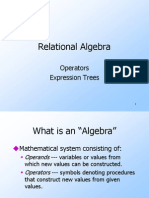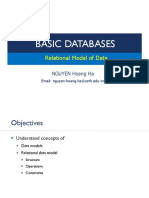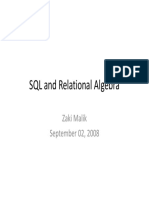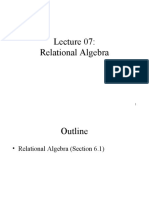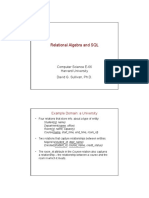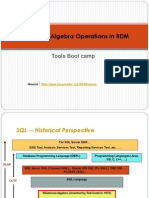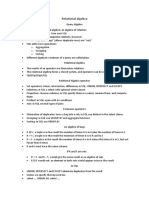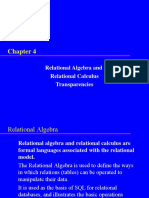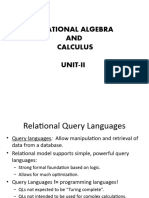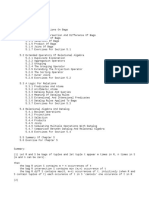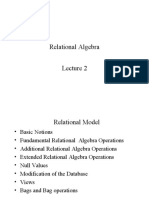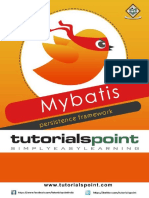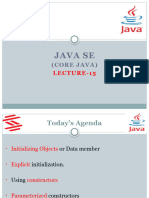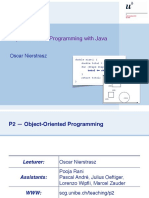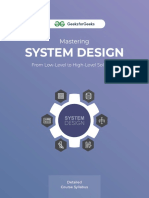0% found this document useful (0 votes)
14 views53 pagesChapter2 Algebra
Chapter 2 discusses the relational model of data and relational algebra, which is a mathematical system for querying and manipulating relations in databases. It covers key operations such as selection, projection, joins, and renaming, along with examples to illustrate their use. The chapter also touches on the concept of bags (multisets) and how relational algebra operates on them, highlighting differences from traditional sets.
Uploaded by
Ahmad DIBCopyright
© © All Rights Reserved
We take content rights seriously. If you suspect this is your content, claim it here.
Available Formats
Download as PDF, TXT or read online on Scribd
0% found this document useful (0 votes)
14 views53 pagesChapter2 Algebra
Chapter 2 discusses the relational model of data and relational algebra, which is a mathematical system for querying and manipulating relations in databases. It covers key operations such as selection, projection, joins, and renaming, along with examples to illustrate their use. The chapter also touches on the concept of bags (multisets) and how relational algebra operates on them, highlighting differences from traditional sets.
Uploaded by
Ahmad DIBCopyright
© © All Rights Reserved
We take content rights seriously. If you suspect this is your content, claim it here.
Available Formats
Download as PDF, TXT or read online on Scribd
/ 53
